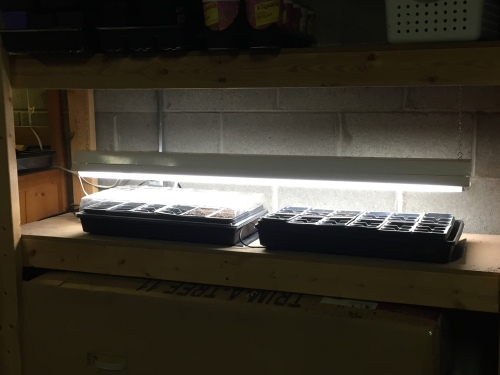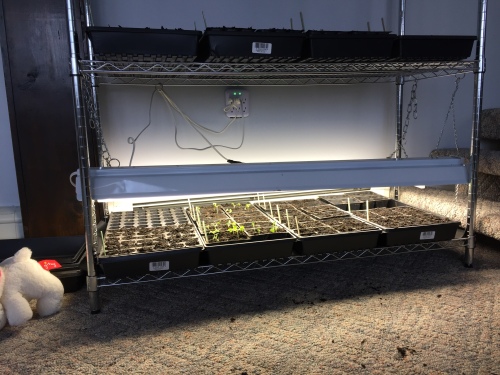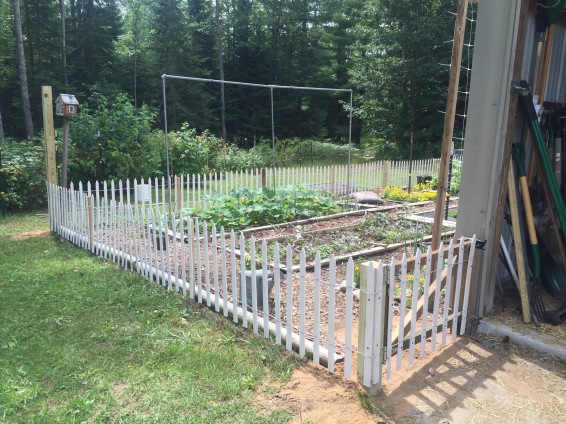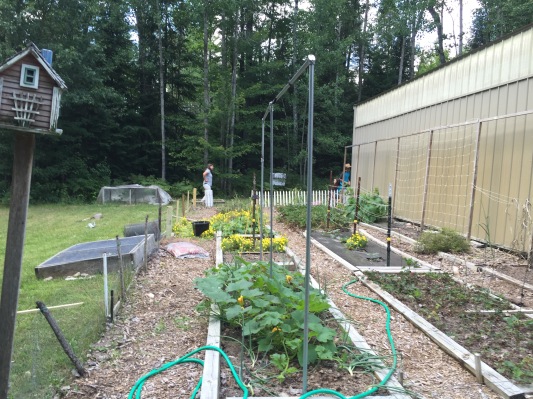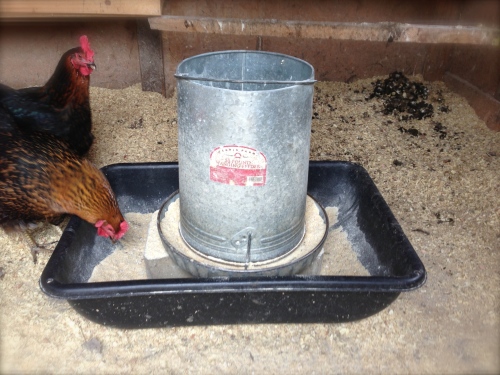
Goodness it’s been awhile since I’ve added anything here! Sorry about that! Frankly, I haven’t had much that I felt was worth sharing for quite some time. I’ll catch up briefly at the bottom of my post, but I want to cut to the chase for those who just want the nitty-gritty!
When my oldest son left for college in the fall of 2013, I admit to being devastated! I knew the structure of our family was changing. Permanently. Even if he came home for vacations, the dynamics would never be the same, and truthfully, I knew it was only a matter of time before he was gone for good, and the next child would leave home, too. The words themselves, the idea of kids leaving home, seem so … distant, I guess. Until you experience it directly for yourself. For some of us, it can be like a death in a way. Others handle it far differently. My husband, for instance, was thrilled to get this kid out of the house and on his own. He was too old and too young all at the same time. He was messy and full of teenage hormones that made him emotionally unpredictable, and took over most of his useful brain cells. All his Dad could see was this was a good thing! Others thought there was something wrong with me when I expressed sadness. They thought I should be happy for him. I was! I was happy for him, but grieving for me.
Mentally, I knew it was a good thing. I was super-excited for this new adventure my son was embarking on. I knew I’d done my job and he was ready. I knew college would be interesting and exciting and open him up to all kinds of ideas and inspirations he wouldn’t get at home anymore. Life was just beginning! Woot! But… it was beginning for him, without me. After all, my job for the previous 18 years had been to carefully train and nurture and raise this young man. I had experienced his day-to-day adventures alongside him all these years. His leaving was the reality that I had effectively worked myself out of a job. That’s the goal, right?!!!
But it left me with a huge hole in my heart. My boy was no longer going to be there to be part of my daily life. No more, “Hey, Mama, come here and look at this funny thing.” No more impersonations of King Julien (my son is the master impersonator and always makes me laugh.) He was forming his own separate life. And his siblings were all-too-eager to follow. And quickly if possible! It dawned on me. My friends were leaving! My kids and I have each forged friendships with each other. We love hanging out together and sharing things together. They are not just my kids. I enjoy each one of them as good friends.
What followed my oldest’s leaving, for those of you who react to this kind of life change in a similar manner, was grief. Deep, gut-wrenching grief. As if someone had died. I cried almost non-stop for two weeks. And then, as you do when you lose someone you love, you start having “good days” and realize you only cried once or twice during the day. Or you actually made it through a whole day without crying!
By Christmas-time, his loooong break from school proved to me that I had gotten used to this new, much quieter life without him in and around all the time. I enjoyed visiting. I liked texting back and forth. We got to see him every couple months. This was going to be okay. But I had to try really hard to suppress the nagging thoughts that my oldest daughter was noticeably hurrying through high school so she could go off to college, too. Preferably in China. Or Great Britain. Or anywhere exotic and exciting.
Fast-forward to November of 2014: The oldest tells me he’s decided to move to Colorado. Panic!!! I was pretty sure I handled it pretty well. But since I had him on speakerphone when he told me, the older daughter, who was listening, piped up, “Do it! Do it! Move out there and I’ll come join you as soon as I possibly can!” There was that dreaded thing I knew was coming. Of course it wasn’t only my oldest son. They would all leave. Ignoring the fact wouldn’t change it. A new wave of grief hit me. But not just grief – righteous indignation as well! I was indignant that I was going to have to go through this gut-wrenching heartache repeatedly until the last of my four children had moved on and I’d adjusted to being alone. Darn it! This was so not cool! This is the way it’s supposed to be. None of my kids has died. They’re not into drugs. They’re not dying of some incurable disease. They haven’t been hurt or lost or rebelled and cut off contact with us. They’re growing up and going off to start their own interesting lives the same way I had done. I was really steamed to be going through such intense grief at something that should have been – sad? Yes. Of course there should be some wistfulness. But not bitter grief.
Quite some time before the Colorado announcement, I had set out on a journey to re-craft myself into the person I wanted to be when my kids were gone. I’d read several books and journaled my thoughts and ideas and tried out some new things. It was a good growing process. I especially found books about retirement and second careers helpful because, well, essentially a full-time Mom ends up having to choose some kind of second career when her first career grows up and leaves home! I’d read several of Barbara Sher’s books and found them quite helpful in crafting the kind of life I hoped to have. But in all, you can’t necessarily use logic to chase away negative emotions.
So after my oldest’s Colorado decision (which the skunk reneged on, darn him!) and my second oldest’s determination to get out of the house and go have some adventures post haste, I decided to see what some of the flower remedies could do for me.
You’ve heard me mention flower remedies for dealing with exhaustion from overwork and extreme care (olive) and for fright of various kinds (mimulus, aspen, rescue remedy) or for plant diseases (crab apple). I’ve found them very helpful in the past for a whole variety of inappropriate or overly strong emotions in myself, my family, friends, and animals. I basically just put together a custom remedy that I labeled “Empty Nest” because that’s exactly what it’s for. There is not really just one emotion bound up in the children leaving home. There are a whole variety of thoughts and emotions that need to be dealt with. I only wish someone had handed me a bottle of this a year or more earlier to deal with the initial shock and grief of having my first child leave home. It basically took me only about three days of using the remedy before my mental state was put to rights and my perspective was much improved. Gone was the intensity. I was even-keeled and thinking about other, interesting, pertinent things instead of grieving. Some people, and some circumstances may require much longer daily use – up to as many as three or four months. But I had started out this time at a pretty good place. I suspect that, had I used these last year when he first left, I’d have been on them for a couple months.
Without any further delay, here is what I’ve put in my custom bottle. I didn’t use all of the remedies below, but maybe half a dozen of them. I use the liquid version of each of these flower essences. (You can just google each of them individually, or start at feelbach.com who carries about 3/4 of them.) I use them in homeopathic form so I don’t have to worry about getting the quantity right, as they work on the principle of frequency of dosage rather than amount. I just add about four drops or so of the custom mix to my 20-oz bottle of water and drink it all day long. You can put it in any drink except coffee, which can have an adverse effect on the action of the remedies:
Chamomile – soothes, releases tensions associated with emotional imbalances. This is especially helpful in the early stages when grief can be so intense and bitter and the feelings are raw. It helps to stabilize emotions and temper mood swings.
Sagebrush – Supports detachment of old patterns and helps us take actions toward making a new path for ourselves. Can clear away energies that are no longer needed, such as the urge to protect and parent our child. Helps create energy toward a new way of life.
Walnut – Helps us feel safer while we get used to new changes, and helps us to accept the changes.
Agrimony – Helps us see the good in a situation
Larch – A great help when we want to learn new things or embark on a new journey, study something, or maybe start a new business or venture.
Bleeding Heart – Helpful during the cutting-the-strings period. Helps heal hurt associated with heartache. Helps to emotionally detach in a healthy way or release any possible feelings of possessiveness in relationships.
Honeysuckle – Helps us embrace the future instead of clinging to the past.
Mariposa Lily – Used to treat hurts caused by a sense of abandonment. Can aid healing of the loss of familiar family status. Can encourage acceptance and caring for the self, turning energies once focused on nurturing the children toward meeting our own needs at this time.
Wild Oat – Helps us find new direction and take the necessary steps to get there.
Willow – Keeps us from feeling sorry for ourselves and give us flexibility to adapt to a new lifestyle
Mustard – to lift depression or emotional wilt.
You can use any or all of these flower essences together. Get an empty dropper bottle and put four drops of each of the flower essences you choose into the bottle. Fill the rest of the way with distilled water or alcohol of some type (brandy, etc…). Shake gently to mix.
*Incidentally, many of these same remedies can be helpful in dealing with other separation issues: death, deployment, divorce, or other similar situations.
Update for friends and fans:
Okay, I promised an update. I haven’t tried anything new in the home farming arena. We’ve been just holding steady with the status quo. Same horses, chickens, garden, and orchard as usual. Got our hay and our beef and still don’t have our firewood, but working on it.
My attentions have largely been taken up by other priorities and interests in the last year: The biggest has been my Mom’s ill health, requiring many, many eight-hour round-trips back and forth to Toledo and a couple trips out to Cleveland Clinic for diagnosis. I’m still filling my position as team editor at Aspendale Communications, which tends to get busiest in autumn and stay relatively steady the rest of the year.
Fun stuff: I spent a fabulous week this last summer at a rock orchestra camp learning some groovy new ways to play with my violin! Woot! I didn’t do any athletic events, as I was put on health leave in April and was glad for the excuse not to train for any races this summer. But on the flip side, my health has improved vastly and I feel like a college kid again! More Woot! If I *wanted to* I could totally start training again. But I’ve focused much more on qigong and yoga with a little weight lifting to help just keep me balanced, prevent me from spending too much time in high gear (which is a real temptation and a constant battle with my Type A personality!).
The latest fun (?) project evolved when, on our last camping trip of the year, our travel trailer presented us with more problems than we felt we wanted to deal with at the time. So we passed it on to some people we love, and purchased a log lodge that was originally a post-WWII camp on a lake about an hour from us. It’s the same lake we had lived on during the winter of 2006-2007 when we trying to be sure we would enjoy the winters up in northern Michigan before we made a permanent move (we do!). The lodge has suffered some neglect and needs some updating and winterizing. If you know me at all, you know the chance to update a house is a challenge that makes me rub my hands together with glee! We closed on that mid-November and I’ve been working at it since. We will be renting it out in one-week stints just a handful of times each year to help it pay for itself, and we anticipate a restful retreat and many happy, fun memories with family and friends there! This week, I’m laying new flooring in the main living area.

